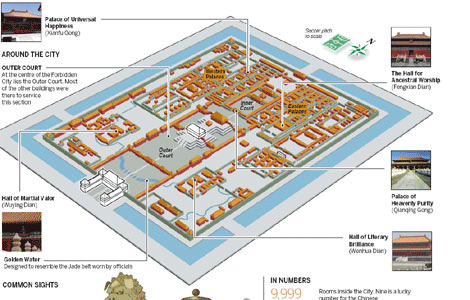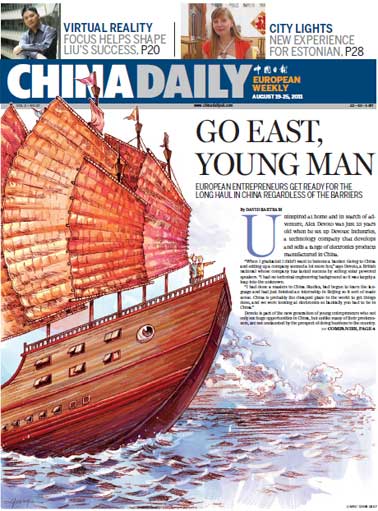The perfect marriage
Updated: 2011-09-09 08:37
By Zhang Jiansen (China Daily)
A burgeoning metropolis in the south is the tale of two cities that are turning into an economic powerhouse
The modern and contemporary history of Hong Kong and Shenzhen epitomizes the long struggle that saw China change from a nation beset by poverty to the second largest economy in the world.
Some 170 years ago, in 1842 precisely, the government of the Qing Dynasty (1644-1911) reluctantly gave away Hong Kong to be a colony of the British Empire, marking the decline of the ancient eastern empire. Not until 1997 did the People's Republic of China resume its exercise of sovereignty.
Shenzhen was just a fishing village of less than 200,000 people in those days. In 1980 Deng Xiaoping drew a circle in a southern border town near Hong Kong, by which the first special economic zone was set up, initiating the course of reinvigoration by means of reform and opening up. In 30 years, Shenzhen has grown into a modern city with a population of more than 10 million and an economic aggregate of $150 billion, creating a miracle in Chinese history.
Hong Kong and Shenzhen are two modern cities, and both have irreplaceable significance to the healthy development of the Chinese and global economy.
Hong Kong is already a famous economic free harbor, financial, shipping and trade center. Since its return, Hong Kong has enjoyed a healthy, prosperous and stable social and economic development. Today Hong Kong collects a huge amount of capital from the rest of the world, and relays a large part of it to the Chinese mainland, providing a means of investment for global capital and boosting the Chinese economy. On the other hand, Hong Kong is also an international trade center that transfers Chinese products to the rest of the world and vice versa.
Hong Kong and Shenzhen are geographically contiguous. Shenzhen is the most convenient passage that links Hong Kong with the Chinese mainland. Many Hong Kong residents were originally from Shenzhen. The 5,000-year-long traditional Chinese culture runs deep through the veins of residents in Hong Kong and Shenzhen, linking them together and making them inseparable.
The industries of the two regions complement each other. The initial force that developed Shenzhen was the manufacturing industry transferred from Hong Kong.
The infrastructure of the two regions is highly connected as well: the railways have completely linked up, as have most of the subways; the direct distance between the two airports is only 37 kilometers. Within one hour people can travel from one downtown area to the other. In sum, no matter in business or in daily life, the two cities are highly integrated as if they have merged into one metropolis, called the "HK-Shenzhen Metropole".
The integration of Hong Kong and Shenzhen will significantly facilitate the development, cooperation and social welfare of the two cities. Currently, there is an overall development plan in Shenzhen. The plan aims to establish a modern service industries cooperation zone in Qianhai Area, forming a "special economic zone" within the special economic zone. It will promote high-end cooperation between the industries of the two cities, through which they will seek to develop their own specialized industries so as to deepen reform of governmental systems, and consequently improve the efficiency of the governments and diminish the differences between the two systems applied in Shenzhen and Hong Kong.
The establishment of a HK-Shenzhen Metropole is significant to social and economic development, for the region and the country as well.
In the past, Hong Kong was the original drop of water, which fell, splashed and gave birth to many little glittering drops of new satellite cities. After the integration, this "original drop" will be bigger and more powerful, and have a stronger influence on the development of Guangdong, Jiangxi and Fujian provinces.
In the future, the integration level of the two cities will increase further, as the financial and market systems of Hong Kong and the Chinese mainland gradually merge with each other.
With further development of Hong Kong and Shenzhen, it is highly probable that the Metropole will be an important international center of economics, consumption and culture. It is even reasonable to imagine that in the near future the two cities would co-host global events such as the Olympics.
Most importantly, the traditional Chinese culture inherited will help the cities seek harmony of people and nature and contribute to the reinvigoration of Chinese society and the economy. There is no doubt that the HK-Shenzhen Metropole will stand tall in the east of the world.
The author is director at the research center on Finance and Industry of the China Development Institute.
(China Daily 09/09/2011 page7)
E-paper

Unveiling hidden treasures
The Forbidden City, after the Great Wall, is the most recognized tourist site in China.
Mountains to climb
Short and sweet
Game for growth
Specials

China at her fingertips
Veteran US-China relations expert says bilateral ties have withstood the test of time

The myth buster
An outsider's look at china's leaders is updated and expanded

China in vogue
How Country captured the fascination of the world's most powerful fashion player
